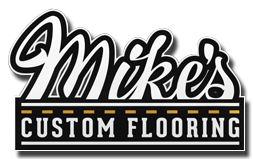When a homeowner decides to install a hardwood, tile, or vinyl floor in their home, it is important to get the right transition strip. When two different types of flooring materials meet together, you will need a transition strip. There is not one type of transition strip that fits all floors. There are actually different types of transition strips and each are designed for the different types of flooring. If you plan to buy your material for your flooring, and then seek out an installer or do your own installing, Mike’s Custom Flooring would like to make sure your get the right transition strip for your project. Following is a guide of the different transition strips and their concepts!
How Does a Transition Strip Work?
Before we get into the different types of transition strips there are a few basic concepts. Transition strips are used when two different floors meet together, when the level between floors change and when color or design material meet. For example, wood floors will be lower than a carpet. In some cases, the thickness of wood floors are different so you will need a transition strip to blend in the different thicknesses of the flooring. In some cases, the material and flooring is the same type and thickness but have a different color or design. This is another example of when to use a transition strip. The only time transition strips are not needed is when the entire floor is the same and is all connected properly. Another consideration is the transition strip itself. You can get them to match your flooring or you can get some that are neutral such as metal, plastic or steel.
Types of Floor Transition Strips
Carpet to Tile Transition Strip – A carpet to tile transition strip is designed to join a low pile carpet with a tile flooring. A carpet to tile transition strip is often made of aluminum or vinyl and one side of the strip butts up tight to the tile and the other side is tucked underneath the carpets edge.
4-In-1 Transition Strip – A 4-in-1 transition strip is a more universal system that can be used in a number of different scenarios. A 4-in-1 transition strip has a mounting channel with a T-molding that fits inside the channel. A 4-in-1 transition strip can work with different types of flooring but they do need to be the same height. A 4-in-1 transition strip is used for carpet transition, hard surface reducers, and end molding.
T-Mold for Hard Surfaces – A T-molding or also referred to as a T-strip is used to link two hard surfaces that are the same height. This strip has two t-shaped sides; one on the top and the one on the bottom, which is glued down to the subfloor. T-molds come in different material, colors and patterns and sometimes you can find a matching color and texture to match the dominate flooring.
Tile to Laminate Transition Strip – Tile is often higher than laminate or vinyl. This is where you will want a tile to laminate transition strip. This transition strip is cut to fit tight to the tile and set on the laminate floor, providing a smoother transition between the different floor heights.
Hardwood Floor Installation, Repairs, Refinishing & More in Charles Town & Eastern Panhandle of Berkeley & Jefferson Counties in WV | Winchester & Frederick County | Round Hill & Loudoun County | Berryville & Clarke County | Herndon & Fairfax County VA
There are a few more types of transition strips that are not as common but may fit your project’s needs. Remember transition strip are not the same and are designed to blend different flooring together. Make sure to get the right transition strip for your home and flooring. If you need help getting the right materials or you need a quality installer, contact Mike’s Custom Flooring today.





